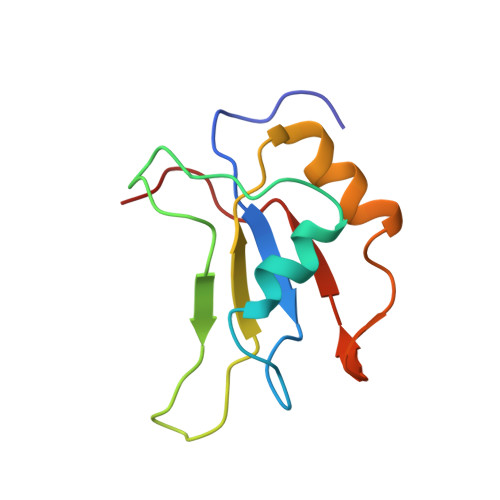Structural delineation of stem-loop RNA binding by human TAF15 protein
Kashyap, M., Ganguly, A.K., Bhavesh, N.S.(2015) Sci Rep 5: 17298-17298
- PubMed: 26612539
- DOI: https://doi.org/10.1038/srep17298
- Primary Citation of Related Structures:
2MMY - PubMed Abstract:
Human TATA binding protein associated factor 2 N (TAF15) and Fused in sarcoma (FUS) are nucleic acid binding proteins belonging to the conserved FET family of proteins. They are involved in diverse processes such as pre-mRNA splicing, mRNA transport, and DNA binding. The absence of information regarding the structural mechanism employed by the FET family in recognizing and discriminating their cognate and non-cognate RNA targets has hampered the attainment of consensus on modes of protein-RNA binding for this family. Our study provides a molecular basis of this RNA recognition using a combination of solution-state NMR spectroscopy, calorimetry, docking and molecular dynamics simulation. Analysis of TAF15-RRM solution structure and its binding with stem-loop RNA has yielded conclusive evidence of a non-canonical mode of RNA recognition. Rather than classical stacking interactions that occur across nitrogen bases and aromatic amino acids on ribonucleoprotein sites, moderate-affinity hydrogen bonding network between the nitrogen bases in the stem-loop RNA and a concave face on the RRM surface primarily mediate TAF15-RRM RNA interaction. We have compared the binding affinities across a set of single-stranded RNA oligonucleotides to conclusively establish that RNA binding is dependent upon structural elements in the RNA rather than sequence.
- International Centre for Genetic Engineering and Biotechnology (ICGEB), Aruna Asaf Ali Marg, 110 067, New Delhi, India.
Organizational Affiliation:
















